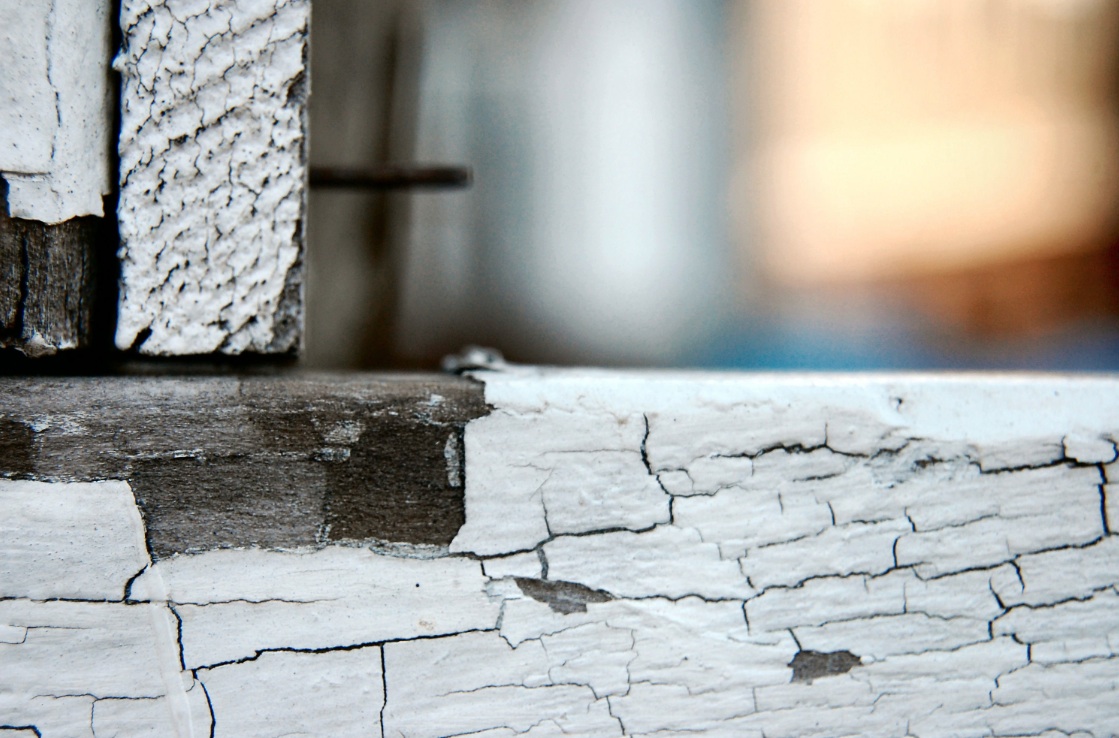As experienced designers, contractors, and owners know, most paint and coating problems are correctable, but some are especially stubborn to address. The following is a partial compendium of typical failure modes and methods for addressing the problem, as provided by paint and coatings manufacturer Benjamin Moore & Co. (www.benjaminmoore.com):
1. Surface imperfections.
There are many types of imperfections that can be visible on painted or sealed surfaces. Alligatoring occurs when the paint film takes on the appearance of alligator hide. (A similar problem is known as wrinkling, which appears as a rough creased or crinkled pattern.) Alligatoring usually occurs when a topcoat is applied before an undercoat is dry, or if an alky enamel or other hard, rigid coating is applied over a latex primer or another more flexible finish layer. Some oil-based coats will lose elasticity as they age, causing this familiar cracking pattern.
2. Blistering.
Blistering (or bubbling) is caused by a localized loss of adhesion and lifting of the paint film from the underlying surface, sometimes when solvent gas expands on sunny façades. Blistering tends to occur in fresh coats of paint.
Both problems require removing as much paint as possible and repainting. However, blistering can immediately reappear if the problem is caused by moisture; to mitigate this problem, the contractor should repair loose caulk and retrofit drainage and drying details, if possible. Installing vents or exhaust fans can also reduce moisture by evaporation before it wets enclosure materials.
For alligatoring, most paint contractors will recommend completely remove the existing oil paint by using a heat gun, scraping, and sanding. After priming the reworked surface with a high-quality latex or oil-based primer, the area can then be recoated with exterior latex or similar paint.
3. Flaking and chalking.
In some cases, a painted or coated surface will exhibit a loose powder or flaking surface. These problems are caused by decomposing paint and are different from efflorescence or mottling, which display white, crusty mineral salt deposits that have leached from mortar, concrete, or masonry surfaces behind the paint. A similar problem known as frosting is often seen on dark paints and coatings; in this case, a white discolored substance appears on the surface, similar to salt staining.
Chalking paint may be washed by rain and cause patterns, or it may wash across other surfaces, an effect called chalk rundown.
4. Miscoloring and staining.
Other sources of miscoloration on exterior and interior surfaces include nailheads and other penetrations that leach a rust-colored stain onto a surface, which often trails down from the location of the hardware. Mildew appears as black, gray, or brown spots or areas on the paint film or caulk bead.
5. Surfactant leaching.
Another source of undesired color change is surfactant leaching, in which concentrated, water-soluble ingredients in latexes seep to the paint surface, often creating a brownish blotchy or shiny appearance. Tannin staining can also be a brownish or tan discoloration on the paint surface, caused by wood tannins that leach through the paint film.
When applied properly onto suitably prepared substrates, architectural coatings will rarely exhibit these kinds of failures. Even better, when integrated into a thoughtful sustainability program, paints and coatings can be a partner in effective building designs that promote improvements to project economics and social considerations as well as protecting the environment.
Related Stories
| Dec 7, 2011
ICS Builders and BKSK Architects complete St. Hilda’s House in Manhattan
The facility's design highlights the inherent link between environmental consciousness and religious reverence.
| Dec 6, 2011
?ThyssenKrupp acquires Sterling Elevators Services
The acquisition of Sterling Elevator Services Corporation is the third acquisition completed by ThyssenKrupp Elevator AG in the last three months in North America.
| Dec 5, 2011
New York and San Francisco receive World Green Building Council's Government Leadership Awards
USGBC commends two U.S. cities for their innovation in green building leadership.
| Dec 5, 2011
Fraser Brown MacKenna wins Green Gown Award
Working closely with staff at Queen Mary University of London, MEP Engineers Mott MacDonald, Cost Consultants Burnley Wilson Fish and main contractor Charter Construction, we developed a three-fold solution for the sustainable retrofit of the building.
| Dec 5, 2011
Gables Residential brings mixed-use building to Houston's Tanglewood area
The design integrates a detailed brick and masonry facade, acknowledging the soft pastel color palette of the surrounding Mediterranean heritage of Tanglewood.
| Dec 2, 2011
What are you waiting for? BD+C's 2012 40 Under 40 nominations are due Friday, Jan. 20
Nominate a colleague, peer, or even yourself. Applications available here.
| Nov 29, 2011
First EPD awarded to exterior roof and wall products manufacturer
EPD is a standardized, internationally recognized tool for providing information on a product’s environmental impact.
| Nov 29, 2011
Suffolk Construction breaks ground on Boston residential tower
Millennium Place III is a $220 million, 256-unit development that will occupy a full city block in Boston’s Downtown Crossing.
| Nov 28, 2011
Leo A Daly and McCarthy Building complete Casino Del Sol expansion in Tucson, Ariz.
Firms partner with Pascua Yaqui Tribe to bring new $130 million Hotel, Spa & Convention Center to the Tucson, Ariz., community.
| Nov 28, 2011
Armstrong acquires Simplex Ceilings
Simplex will become part of the Armstrong Building Products division.
















